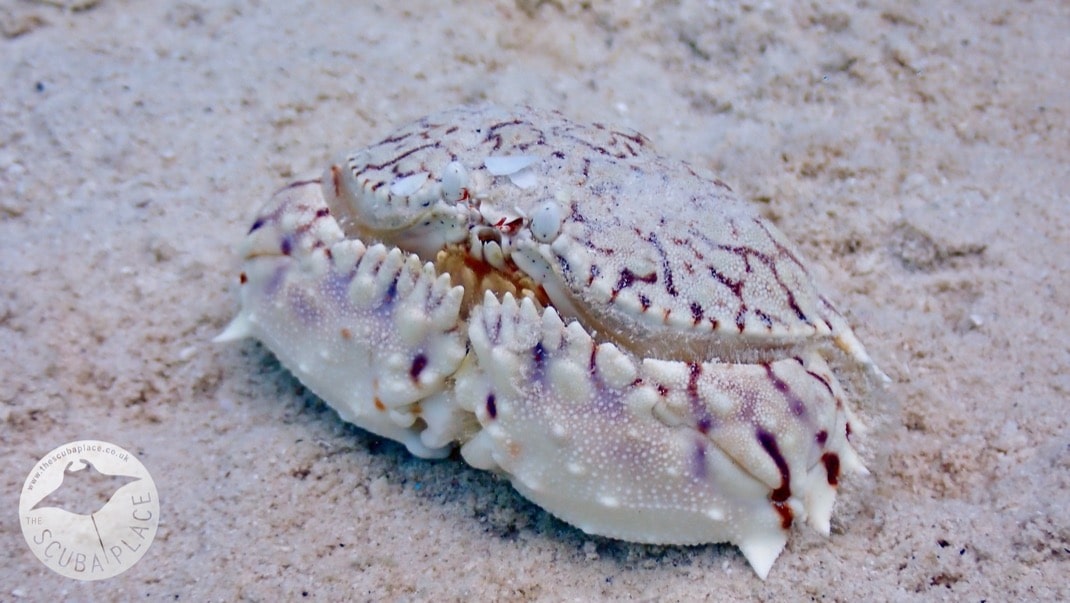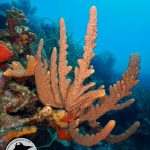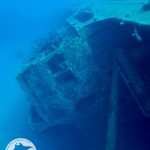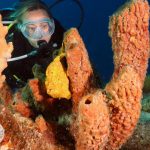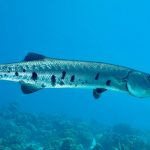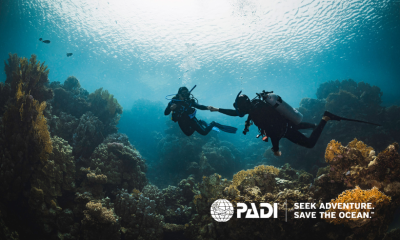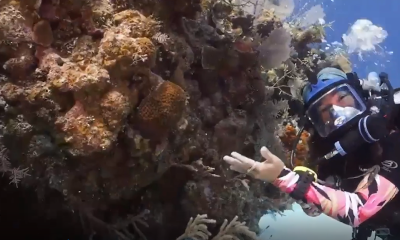Blogs
The Scuba Genies head to Bonaire! Part 2 of 2

In the second of this two-part blog, The Scuba Genies share their trip report from the Come Dive with Us hosted trip to Bonaire in September 2021. Missed Part One? Read it here!
There is another dive we just must share with you and one that we can confidently call a ‘Dive of a Lifetime’. There were 12 of us in our group, and collectively we have logged in excess of 8000 dives in some very special places around the world. And every one of us was totally blown away by this dive! A fellow diver, by way of the Girls that Scuba FB group mentioned that if the timing was right, an ostracod dive was one not to miss. A link to an online article noted that 2 to 5 days after a full moon and 45 minutes after sunset, was the best time to observe the mating ritual of these tiny creatures. And only if they have not been exposed to light of any kind. That meant no streetlights and no torches. NO TORCHES!
We lucked out and were in Bonaire during a full moon and planned our Ostracod dive carefully. One the fifth night after the full moon we headed south to Red Beryl, a site we had previously been to and knew the terrain. We were in awe of the soft coral forest at the site, and this was the perfect environment for the ostracods. As the ‘show’ only lasts about 20 minutes, we entered the water while it was still light and left a beacon on the shore to help guide us after the dive. We gently finned out over the sand and hovered above the soft coral at around 8 metres as the dark crept in. Little sparks of light started to appear in ones and twos, and then just as we had hoped, chains of these tiny creature were all around us, in hundreds and then thousands! Everywhere you looked, the ostracods were rising to the surface, like underwater fireflies linked together flashing their bioluminescence one after the other, giving us nature’s most amazing firework show! The only way I can explain it is seeing thousands of Tinkerbells all at once! 20 minutes later, it was all over so we turned on our torches and headed slowly back to the shallows, happy to find a sleeping turtle, scorpion fish, more octopus and lots of little creatures.
As our holiday inevitably came to an end, we chose a site within minutes of Buddy’s called The Invisibles. A highly recommended dive site, we parked up alongside the beach, kitted up and walked down the rock beach and into the water. 95 minutes later, we walked back up the beach with memories of green turtles feeding, free-swimming moray, immense sponges and a plethora of anemones with their tenant critters – shrimp, crabs, and all things fascinating. And back in the sandy shallows we didn’t know where to look! A golden spotted snake eel, juvenile angel fish and a box crab that scuttled across the seabed before vanishing into the sand in a finger-click.
In summary, the diving here was very special – it truly lives up to its reputation of being one of the best destinations to visit, and in fact, over-delivered when it came to our expectations from the Caribbean. To mix it up, in addition to shore diving we also scheduled 4 days of boat diving right from the dock at Buddy’s. We were able to explore all around Klein Bonaire and reach some of the more difficult shore-entry sites including Karpata and 1,000 Steps. We would recommend this highly if only to get away from a daily dose of sand in your boots!
Buddy’s is a full-service dive operation, offering quality accommodation, good food, and the dive centre is as slick an operation as we have ever seen or experienced. The drive-thru tank station is genius for shore diving, the house reef is easily accessed, and the boat diving from the dock on one of their 5 purpose-built dive boats is organised perfectly. Catering for newbies all the way through to technical and rebreather divers, Buddy’s delivers it all, and very well. The staff are fun, highly professional, and the whole set-up is geared to making a dive trip work without any fuss. Even the shop is very well stocked with kit, spares, forgotten stuff and replacements for broken things!
Importantly, Buddy’s is also a supporter and enforcer of the Marine Park protection rules – the whole of the island is surrounded by a protected marine reserve, so no touching, no gloves, no pointy-sticks. Turtle nesting and coral regeneration programmes are evident, and given the fantastic health of the reefs, the protection initiatives and regulations work.
Would we go back? Without any hesitation, and repeatedly!
Bonaire delivered the goods. Great diving, great accommodation and freedom to dive wherever and whenever you want – especially with the tanks on the house reef available 24/7. A perfect destination for dive clubs and groups as the 3–bedroom apartments really work.
Bonaire is exceptional value for money. There are very few places on this planet where you can dive so much for so little in a great marine environment.
Key Facts:
- Getting there: Flights with KLM to Bonaire depart from any major UK airport via Amsterdam. From London Heathrow it was a 12-hour total flight time. An extra 23kg bag also costs less than £90 return if booked in advance.
- Air temperature: Tropical – average daily temperature throughout the year is 31’, reasonable rainfall (passes quickly) and the sea breezes are most welcome!
- Water temperature: 28-30°C. A 1-3mm full suit is recommended to protect from scratches and stings and to keep the sand out.
- Visa requirement: No tourist visa was required, but under COVID there are protocols in place. See https://www.bonairecrisis.com/en/travel-to-bonaire/ for the current requirements.
- Currency: US Dollar with ATMs easily found, and all major credit cards are accepted.
- Electricity: 120V with American 3- and 2-pin plugs. Our US/UK converters worked without issue
Accommodation: You mention Bonaire and Buddy Dive Resort is the first place people mention. Only 10 minutes from the airport makes for a super simple transfer. Multiple room types, all with kitted out kitchens and air-conditioned bedrooms. Two pools, two restaurants, full-service dive shop and staff always around to answer questions or lend a hand.
Diving: With both world class shore and boat diving available, warm and clear water, abundant marine life, coral and sponges like you’ve never seen, what more could you ask for?
Price Guide: Expect from £1500 per person based on two sharing for 7 nights with bed and breakfast. Unlimited shore and house reef diving, Nitrox and car rental all included. Return flights and transfers also included.
Additional costs:
- STINAPA Marine Park passes: $45 per calendar year. We purchased ours online prior to departure and carried a copy in the vehicle when shore diving.
- Buddy Dive Vehicle Insurance: $19 per day of vehicle rental for one named driver for the duration of your stay. For an extra $5 you can name another driver for a day. This was added to the room bill, and we split the cost with the rest of our apartment.
Our Advice: Stay longer…. 10 days would be the perfect amount of time in our opinion to get the most out of the shore and boat diving. And with numerous flights during the week to choose from, any duration can easily be arranged.
Find out more about the worldwide dive itineraries that The Scuba Place offers at  www.thescubaplace.co.uk.
www.thescubaplace.co.uk.
Blogs
BVI Wreck Week – Diving (Part 3)

![]() BVI Wreck Week allowed us to dive several of the wrecks the BVI has to offer, as well as sampling some of the best reef sites too. Our previous blog focused on the wreck of the RMS Rhone, so in this one we will try to give you a taste of the rest of the diving on offer.
BVI Wreck Week allowed us to dive several of the wrecks the BVI has to offer, as well as sampling some of the best reef sites too. Our previous blog focused on the wreck of the RMS Rhone, so in this one we will try to give you a taste of the rest of the diving on offer.

And there is a great deal of wonderful diving to tell you about. Our first day of diving did not offer the best visibility due to heavy rain earlier in the week. However, we were taken to a rugged dive site that had Caribbean and Lemon Sharks swimming all around us. If we had been able to see the usual 20m+ I am sure we would have been able to talk of dozens of sharks on the site.

The BVI has plenty of artificial reefs, created from wrecks deliberately sunk. A couple of these are artistic creations from Beyond the Reef. The Willy T is a pirate themed party boat sunk in shallow water that now has skeletons of pirates duelling on the deck and going about their dastardly ways. It is a lot of fun and once you have had your fill, you can head up onto the shallow reef. Shark-plano is a series of three planes that were damaged in a hurricane, that have been turned into shark species and sunk. Both these sites are perfect for the diver that loves a bit of Instagram appeal!

Wreck Alley has a series of three boats sunk to create a super dive site perfectly aligned for a single dive where you can explore them all. Moray eels can be seen free swimming along the decks, huge stingrays back the sandy seabed their home. Turtles cruise past as you make your way around and then up onto the reef for your safety stop.
On every dive we did we saw sharks which absolutely delighted us. The local dive shops seem to be particularly engaged in conserving the reefs, taking part in coral reef restoration, lionfish hunting, cleanups and logging their sightings. We were filled with positivity at the end of each day.
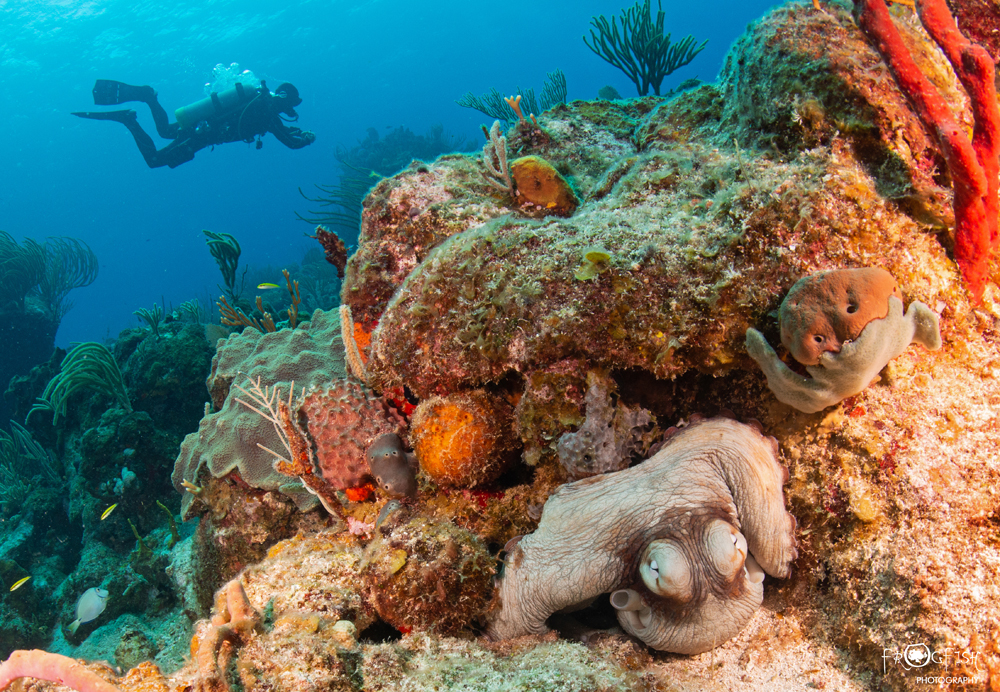
We hope that we can return to do it all again at BVI Wreck Week 2024!
Watch out for our full feature on BVI Wreck Week in the next issue of Dive Travel Adventures coming out in July.
For more information about BVI Wreck Week 2024 visit their website here.
Nick and Caroline were hosted by BVI Wreck Week
The Moorings provided their yacht for the week
Host Dive Centres:
Blogs
BVI Wreck Week – Diving the RMS Rhone (Part 2)

![]() You cannot talk about BVI Wreck Week, or diving in the British Virgin Islands, without spending some time on the jewel in their crown of wreck diving – the RMS Rhone. So this blog is going to be dedicated to a wreck dive that we were happy to dive three times on our trip and would have been happy to dive every day!
You cannot talk about BVI Wreck Week, or diving in the British Virgin Islands, without spending some time on the jewel in their crown of wreck diving – the RMS Rhone. So this blog is going to be dedicated to a wreck dive that we were happy to dive three times on our trip and would have been happy to dive every day!

The RMS Rhone was a UK Royal Mail Ship wrecked off the coast of Salt Island on 29 October 1867 in a deadly hurricane. Now it is the most popular dive site in the region. The dive briefings for the site are filled with stories of the fate of the ship and some eye-opening tales since.
The wreck and surrounding area become the British Virgin Island’s first national marine park in 1980. Many of the underwater segments of the 1977 thriller The Deep were filmed on the Rhone, requiring actors Jacqueline Bisset, Nick Nolte and Robert Shaw to learn how to scuba dive.

You’ll need at least two dives to fully experience the RMS Rhone. The ship split apart on sinking and the bow drifted just a little before sinking. The two halves are about 100 feet apart with the bow sitting in deeper water (around 25 meters / 80ft). So you are best to explore the bow fully on a single dive and then head to the stern on your second dive.

Whilst the history, artifacts and stories from the movies are absorbing, as soon as we got underwater to dive her, it was the incredible marine life that had us hooked. Two seahorses had made their home right at the bow of the wreck. Stingrays lay buried in the sandy sea bed. The structure is covered in colourful corals and sponges. Schools of fish occupy the overhangs and metal remains. We saw sharks on all three dives and were treated to a huge spotted eagle ray gliding over the wreck. Lobsters waved their antennae at us from every crevice. Life is everywhere you look on this dive.

The marine park status has certainly ensured that this is one of the best wrecks we have dived in the Caribbean. Whilst we did not get the chance to do this – we bet it would make an awesome night dive.

Check out our next blog to find out more about the diving and watch out for our full feature in the next edition of Dive Travel Adventures Magazine in July!
For more information about BVI Wreck Week 2024 visit their website here.
Nick and Caroline were hosted by BVI Wreck Week
The Moorings provided their yacht for the week
Host Dive Centres:


